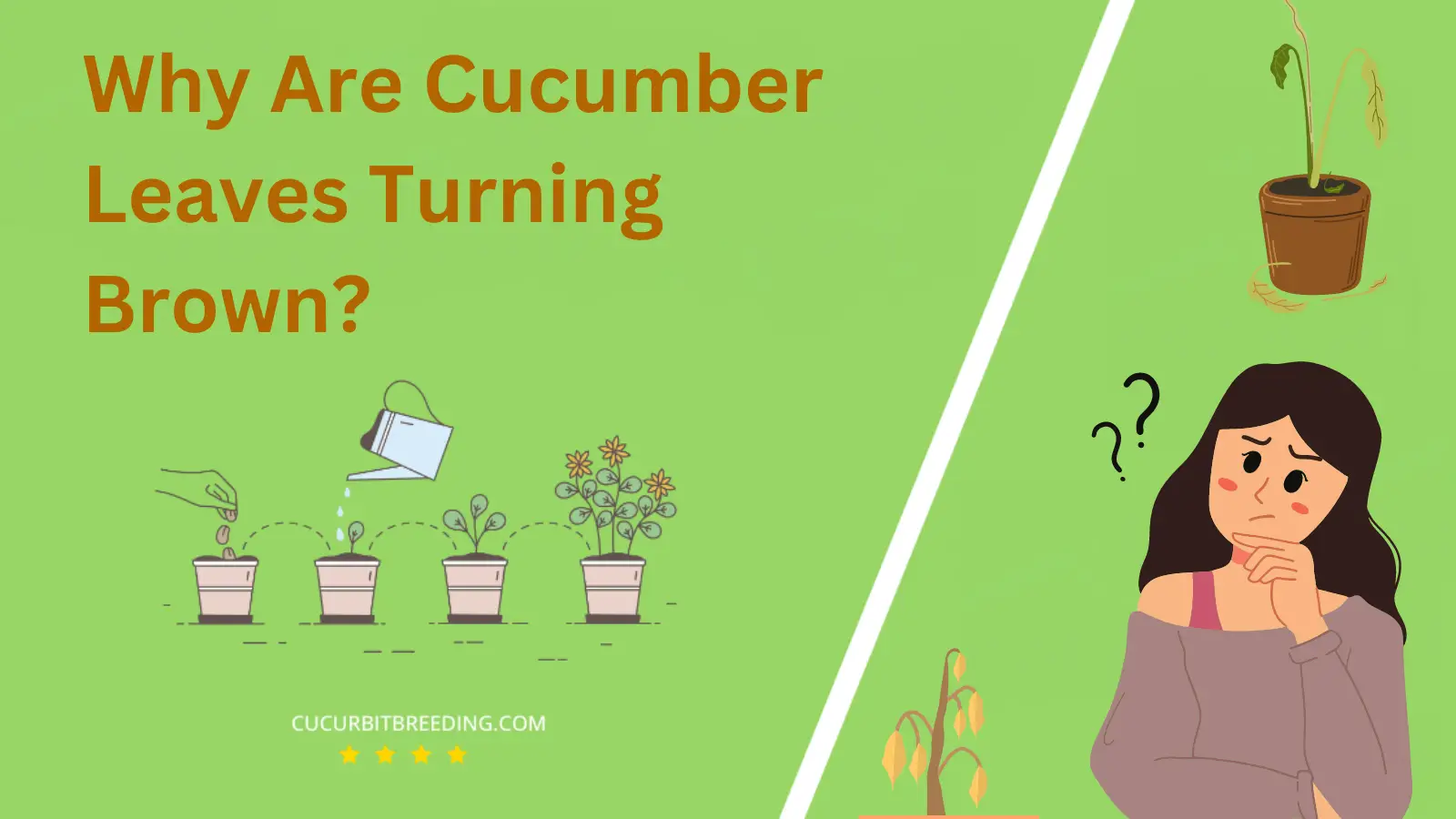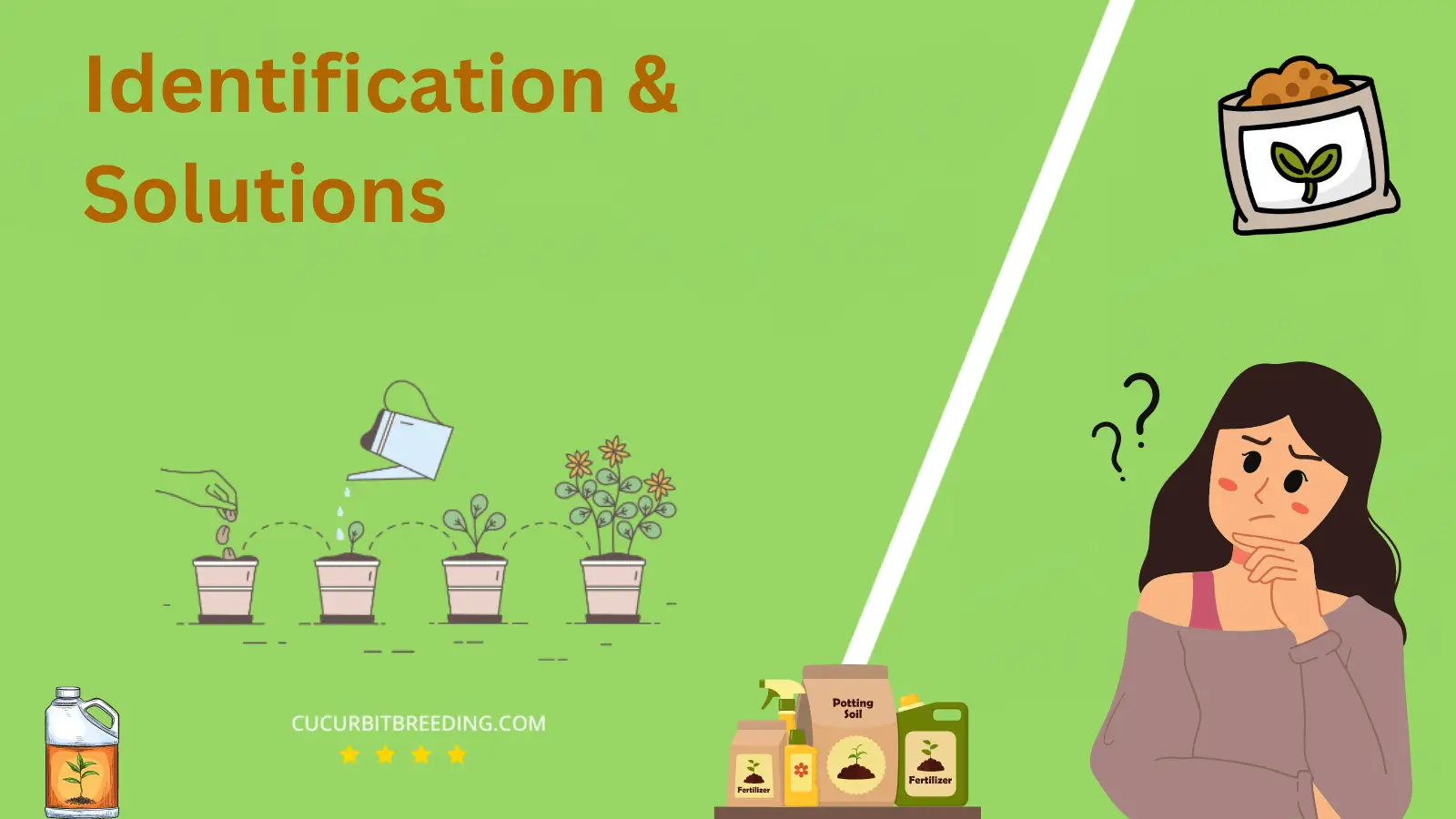
Have you noticed your cucumber leaves turning brown? This common issue can raise many alarm bells for dedicated gardeners, as cucumbers are an essential part of many summer vegetable gardens.
Whether you’re a seasoned horticulturist or a novice gardener, the sight of browning cucumber leaves can spark both concern and curiosity. But don’t worry – while this may seem alarming, it’s a symptom that can indicate several possible issues with your beloved plants.
Why Are Cucumber Leaves Turning Brown?
Cucumber leaves can turn brown due to a few significant factors such as diseases (like bacterial wilt and powdery mildew), pest infestations, and environmental stressors like lack of water or nutrients. Other factors include temperature extremes and damage from chemicals or pesticides. Observe these symptoms as they can drastically affect your plant’s health and productivity.
1. Fungal infections
| Description | Fungal infections cause cucumber leaves to turn brown due to damage to the leaf tissues. |
|---|---|
| Solution | Increase the frequency of watering to prevent dehydration and restore optimal moisture levels. |
When cucumber leaves turn brown, it is often due to fungal infections. These infections can be caused by various types of fungi, such as powdery mildew, downy mildew, or leaf spot diseases. Fungal infections typically thrive in warm and humid conditions, which create an ideal environment for their growth. As the fungi attack the cucumber leaves, they cause discoloration and browning.
To combat fungal infections in cucumber plants, several solutions can be implemented. Firstly, it is crucial to ensure proper air circulation around the plants by spacing them adequately. This will help reduce humidity levels and prevent the fungi from spreading. Additionally, watering the plants at the base rather than overhead can minimize moisture on the leaves, further inhibiting fungal growth. Regularly removing any infected leaves and disposing of them far away from the garden will prevent the spread of the fungi. Applying fungicides specifically designed for cucumber plants can also be effective in controlling fungal infections. Following proper crop rotation practices and avoiding planting cucumbers in the same area for consecutive years can help reduce the risk of fungal diseases. Overall, by implementing these preventive measures and promptly addressing any signs of fungal infections, the browning of cucumber leaves can be mitigated or prevented, allowing for healthier plant growth.
2. Overwatering
| Description | Excessive water disrupts root oxygen supply, causing leaf cells to drown and turn brown. |
|---|---|
| Solution | Reduce watering frequency and allow soil to dry out between watering to prevent browning of leaves. |
3. Lack of sunlight
| Description | Insufficient sunlight causes lack of chlorophyll production, resulting in browning of cucumber leaves. |
|---|---|
| Solution | Provide artificial light source or relocate plant to an area with adequate sunlight. |
The reason why cucumber leaves may turn brown is due to a lack of sunlight. Insufficient sunlight can negatively impact the plant’s ability to carry out photosynthesis, which is essential for healthy leaf development.
When cucumber plants do not receive an adequate amount of sunlight, their leaves may start to brown and eventually die off.
To address this issue, it is important to ensure that the cucumber plants are placed in a location where they receive proper sunlight exposure. Providing at least 6-8 hours of direct sunlight each day is ideal for cucumber plants.
If natural sunlight is limited, using artificial grow lights can also be a suitable solution to ensure sufficient light for the plants.
By ensuring an adequate supply of sunlight, the browning of cucumber leaves can be prevented, promoting healthier growth and overall plant vitality.
4. Nutrient deficiencies
| Description | Insufficient sunlight causes lack of chlorophyll production, resulting in browning of cucumber leaves. |
|---|---|
| Solution | Provide artificial light source or relocate plant to an area with adequate sunlight. |
Nutrient deficiencies can cause cucumber leaves to turn brown. When plants lack essential nutrients such as nitrogen, potassium, or magnesium, they may exhibit symptoms like brown or yellowing leaves. These deficiencies can impact the plant’s overall health and productivity. To address this issue, it is crucial to provide the necessary nutrients to the cucumber plants. Regularly fertilizing the soil with a balanced fertilizer specifically formulated for vegetables can help replenish the nutrient levels. Additionally, incorporating organic matter, such as compost, into the soil can improve its nutrient content.
It is also advisable to conduct a soil test to identify specific nutrient deficiencies and adjust the fertilizer accordingly. Proper watering practices and maintaining adequate moisture levels in the soil are also important to ensure nutrient uptake. By addressing nutrient deficiencies through appropriate fertilization and soil management techniques, the cucumber plants can regain their health, preventing further browning of the leaves and promoting optimal growth and yield.

5. Pests or insect damage
| Description | Provide artificial light source or relocate plant to an area with adequate sunlight. |
|---|---|
| Solution | Apply organic insecticide to control pests and prevent further damage to cucumber leaves turning brown. |
Pests or insect damage can cause cucumber leaves to turn brown. When pests such as aphids, cucumber beetles, or spider mites infest cucumber plants, they feed on the foliage, leading to browning and wilting of the leaves. This damage disrupts the normal functioning of the leaves, hindering photosynthesis and nutrient absorption. To address this issue, it is important to implement pest control measures.
Regularly inspect the plants for signs of pests and remove them manually if possible. Additionally, applying organic insecticides or using natural predators like ladybugs can help control the pest population. Maintaining proper plant hygiene, such as removing fallen leaves and debris, can also discourage pests from infesting the cucumber plants.
6. Environmental stressors
| Description | cause a disruption in chlorophyll production, leading to brown discoloration in cucumber leaves. |
|---|---|
| Solution | Increase watering to improve hydration and create a more favorable environment for the plant. |
Environmental stressors can cause cucumber leaves to turn brown. These stressors include extreme temperatures, inadequate watering, and exposure to harsh sunlight. When cucumber plants are exposed to high temperatures, their leaves may become scorched and turn brown. Insufficient watering can lead to dehydration, causing the leaves to dry out and turn brown. Additionally, if cucumber plants are exposed to direct sunlight for extended periods without any shade, the leaves can get burned and eventually turn brown.
To address this issue, it is essential to ensure that the cucumber plants are provided with adequate water, especially during hot weather. Providing shade or using shading materials can also help protect the plants from excessive sunlight. Maintaining a suitable temperature and implementing proper watering techniques will help prevent cucumber leaves from turning brown due to environmental stressors.
7. Disease or bacterial infections
| Description | can cause cucumber leaves to turn brown due to physiological damage and cell death. |
|---|---|
| Solution | Apply a copper-based fungicide to cucumber leaves turning brown caused by disease or bacterial infections. |
Disease or bacterial infections can cause cucumber leaves to turn brown. This issue affects the plant as it weakens its overall health and reduces its ability to produce healthy fruits. To address this problem, proper plant hygiene is crucial. It is essential to remove any infected leaves or plants to prevent the spread of disease. Additionally, practicing crop rotation by not planting cucumbers in the same area for consecutive years can help minimize the risk of bacterial infections. Ensuring proper watering techniques, such as watering at the base of the plant to avoid wetting the leaves, can also help prevent the development of diseases. Finally, using organic fungicides or bactericides, as recommended by experts, can be effective in controlling and preventing bacterial infections in cucumber plants.